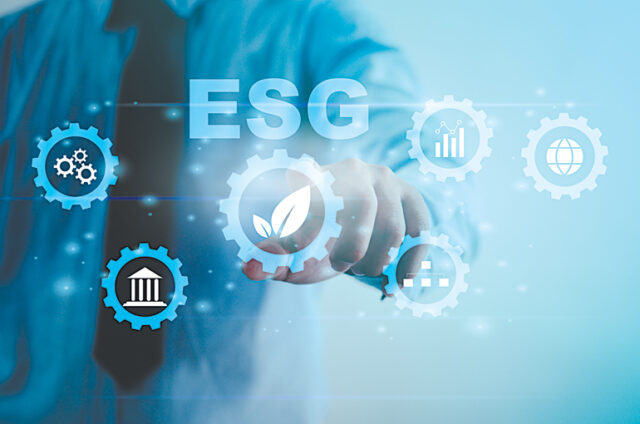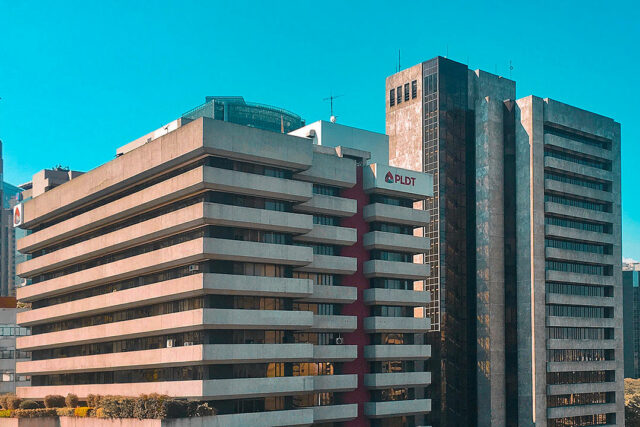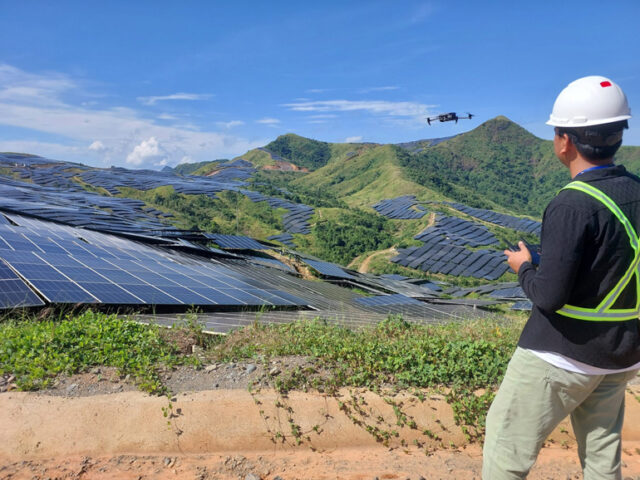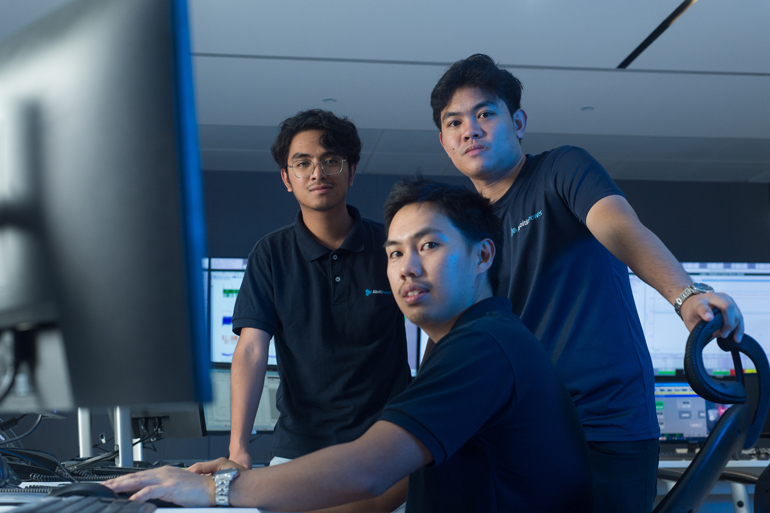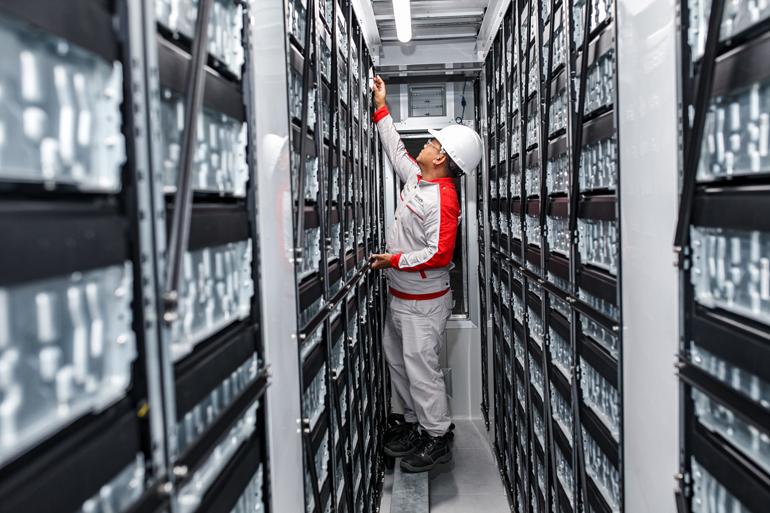By Justine Irish D. Tabile, Reporter
THE RETAIL INDUSTRY is still expected to grow this year despite the rise in vacancies and competition from electronic commerce (e-commerce).
Yukiko Tsukamoto, partner at Bain & Co., said that she is still optimistic about seeing growth in the industry as most retailers have returned to pre-pandemic levels.
“Consumption has remained strong despite inflation. We believe there is significant opportunity as consumer spending grows,” she said.
The Philippine Statistics Authority (PSA) reported that headline inflation increased to 4.4% in July, bringing average inflation in the seven months to July to 3.7%.
Meanwhile, household final consumption, which accounts for over 70% of the economy, rose 4.6% in the second quarter, slowing from 5.5% a year earlier.
Bain & Co. reported in July that the Asia-Pacific lagged its pre-pandemic share of global retail sales growth, averaging 29% between 2019 and 2021.
The Asia-Pacific accounted for 34% of global growth between 2021 and 2023 but remains below the 59% posted in 2017-2019.
Still, Ms. Tsukamoto said Bain & Co. sees significant growth upside for Philippine bricks-and-mortar retailers.
In particular, she sees an opportunity for grocers to increase their market share against wet markets.
“Wet markets remain a major source of fresh groceries for many Filipino households, comprising two-thirds of the grocery market compared to 20-30% in Singapore and 40-50% in Malaysia,” she said.
She added that grocers could also make themselves more competitive by improving the in-store customer experience and capturing data on and analyzing consumer shopping behavior.
For non-grocery retailers, she said the opportunities lie in non-shopping experiences and leveraging data.
“For non-grocers, in-store customer experience with more focus on the non-shopping experience to differentiate against online retailers and capturing customer data and understanding shopping behavior will be essential for growth,” she added.
E-COMMERCE VS BRICK AND MORTAR
Philippine Retailers Association (PRA) President Roberto S. Claudio, Sr. said that brick-and-mortar businesses view the growing e-commerce market as a threat.
“E-commerce has gained a major foothold among consumers, to the detriment of brick-and-mortar stores. Convenience, product availability, and speed contributed to this phenomenon,” Mr. Claudio told BusinessWorld via Viber.
“Pre-pandemic e-commerce accounted for only 3-5% of total retail sales. In 2023, this figure went up to 20-25%,” he added.
The Department of Trade and Industry (DTI) tallied 86.98 million internet users in the Philippines, with internet penetration at 73.6%.
Citing a report by Google, Temasek, and Bain & Co., the DTI said the Philippine internet economy was $24 billion in gross merchandise value (GMV) last year and is expected to grow to $80-$150 billion by 2030.
“You can see that the growth is very high, and our population is around 111-110 million, many of whom are young. So, the potential of e-commerce is big,” DTI Digital PH Group Undersecretary Mary Jean T. Pacheco told BusinessWorld.
However, she said there remains significant upside opportunity to increase spending online, by persuading the market further of the convenience and security of online platforms.
“There is still an issue of trust, and this is the reason why we are very happy that we have laws like the Internet Transactions Act, which idea is to build trust in e-commerce,” she said.
Mr. Claudio said that the government should focus on the overall retail industry and not just e-commerce by leveling the playing field.
“E-commerce is just one small component of retail; in fact, 75% of the total retail industry is still brick and mortar,” he said.
“And remember, the government is not yet generating income from e-commerce businesses because it does not know how to tax the foreign retailers, since they do not have offices and registrations here,” he added.
Earlier, the PRA raised concerns about the uneven playing field caused by the differing tax regimes each industry operates under.
“We are required to pay a 12% value-added tax. But these retailers who are e-commerce or online are going to pay only 1% withholding tax … For us, in brick and mortar, it’s completely unfair,” he added.
Niks Fojas, TikTok Shop Category Lead for Fast Moving Consumer Goods, said e-commerce platforms allow small brands to compete with larger rivals.
“We have found that small and medium enterprises (SMEs) often find it challenging to compete with established brands in traditional retail spaces,” Ms. Fojas told BusinessWorld via e-mail.
“Through Shoppertainment, we aim to empower SMEs to grow further and contribute to the economy by providing them with a digital storefront to showcase their products and reach a nationwide audience,” she added.
According to Ms. Fojas, there are over two million Philippine businesses on TikTok Shop, mostly SMEs.
“These SMEs have harnessed the power of Shoppertainment to grow their brand and customer base by incorporating digital strategies from TikTok Shop to extend their reach and engage with a broader audience beyond their offline stores,” she added.
RETAIL VACANCY RATES
Aside from threats posed by e-commerce to brick-and-mortar stores, property analyst firm Colliers Philippines said vacancies in the retail property segment have been rising on increased supply.
“If you look at the malls, the vacancies are at about 15%, so this is still an elevated vacancy compared to about 9-10% pre-pandemic,” Joey Roi Bondoc, director and head of research at Colliers, told BusinessWorld in an interview.
He said that the vacancies rose following the closure of many stores during the pandemic, among other reasons.
“Much of the increase is due to the new retail spaces being completed. That is what really drove the 15% vacancy in Metro Manila,” he added.
Colliers reported that the vacancy rate in the first quarter was 15.5%, which it projects to increase to about 17% by the end of the year due to the substantial delivery of new retail space across Metro Manila.
“There will be 160,000 square meters of new retail space every year from 2024 up to 2026. So, that’s still pretty substantial,” he said.
“And, of course, it will take time before that new retail space will be absorbed by the market. Because of that, we’re projecting retail vacancy to increase through 2024,” he added.
However, Mr. Bondoc said that despite ample supply, Colliers remains positive on retail due to an improving economy.
“I think the key indicators are the young mobile workforce, the demographic sweet spot, rising purchasing power, the Philippines as one of the fastest-growing economies in Southeast Asia, remittances, and possible interest rate cuts,” he said.
“One major reason also why malls are very popular in the Philippines is that we don’t have a lot of parks. Our public spaces are our malls … That is why the mall culture here in the Philippines will continue to thrive,” he added.
Fourth Wall Research Director John Brylle L. Bae said that the rise of e-commerce should not be viewed as a threat to brick-and-mortar businesses as the impact varies for each type of product and service.
“The trust factor is crucial for certain purchases, requiring consumers to see the product in person,” he told BusinessWorld via e-mail.
“For example, despite the growth of e-commerce, Filipino consumers, regardless of income class, often prefer buying a brand-new 16-inch television from a mall to ensure quality. Trust is key, especially with high-cost items,” he added.
THE OMNICHANNEL FUTURE
PRA’s Mr. Claudio said that the new retail is “serving the customer in whatever (way) he or she wants,” as many brick-and-mortar retailers are now shifting part of their operations to e-commerce.
“If the customer wants to be served at home, we must extend the best store experience. Omnichannel will be the future of retailing,” he said.
However, he said that malls will have to innovate and become centers for entertainment and community activity as well as shopping to survive.
“People’s quest for social interaction remains. Brick-and-mortar shopping will survive, and e-commerce will simply augment the customers’ options on how to shop,” he added.
TikTok Shop’s Ms. Fojas said that the fundamental shift in consumer-brand interactions stemming from changing consumer needs can be addressed by implementing an omnichannel approach.
“By embracing omnichannel strategies, businesses can provide a consistent and engaging experience across platforms, ensuring they meet customers’ evolving preferences and needs,” she said.
This, she said, is why content is crucial in ensuring that brands build stronger customer connections.
“But even as we continue our efforts to enable businesses to enjoy greater opportunities to build and expand, we are also mindful of maintaining a safe and positive shopping experience,” she added.
Citing the Chef Tony’s Popcorn brand as an example, Ms. Fojas said the popcorn shop posted 48% growth in total GMV during the 6.6 sale in mid-June.
“Notably, its mixed flavors saw a 26.4% GMV uplift, with a triple-digit growth of 307% for other varieties like Jalapeno Cheddar, Golden Caramel, and Sour Cream Jack Cheddar,” she said.
Chef Tony’s Popcorn joined TikTok Shop in October.
Fourth Wall’s Mr. Bae said the future of retail will likely be omnichannel, especially in the Philippines.
“Mall culture in the Philippines is deeply rooted, making it unlikely that e-commerce will completely replace malls. Malls are integral to family bonding in this culture,” he added.
Bain & Co.’s Ms. Tsukamoto said that the shift to omnichannel retailing is inevitable, particularly for non-grocery stores.
“Consumers will expect retailers to understand them well and will expect to shop whenever they want. Shoppers will seek out retailers for the overall experience, not merely for making purchases,” she added.
Mr. Bondoc of Colliers said though e-commerce poses a challenge, some retailers are already complementing it.
“It is not exactly a big challenge. Right now, what retailers and mall operators are doing is complementing their retail spaces with an online presence — an omnichannel strategy,” he said.
“One good example of this is Uniqlo; for example, there are items that are not available online, so you will be really compelled to visit the store,” he added.
He said there has also been a proliferation of pop-up stores for products that were previously only available online.
“So that will also result in retail space take-up. So I think it is a good mix as it is complementing the need for physical mall space,” he added.



